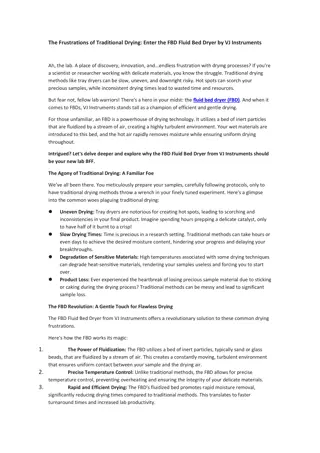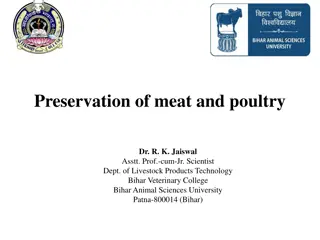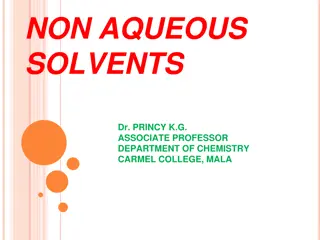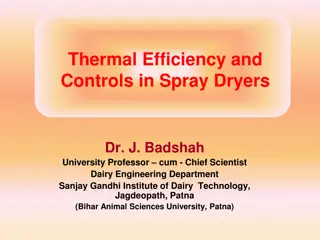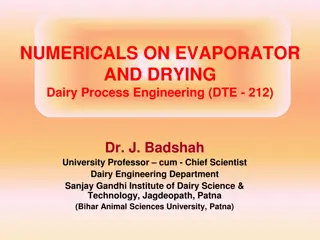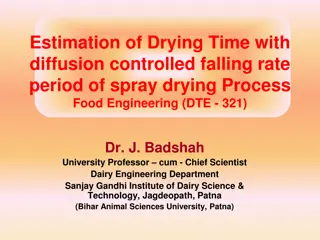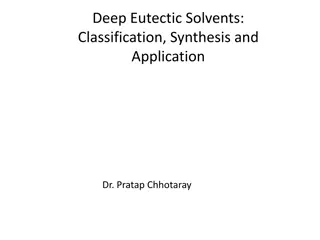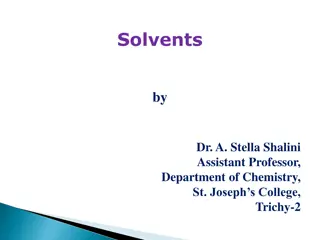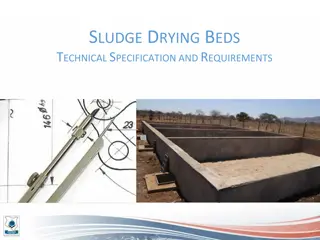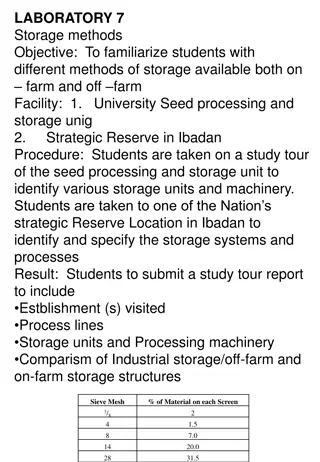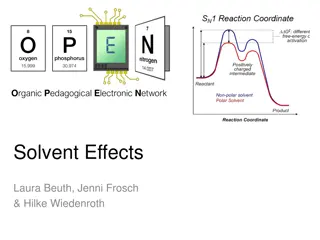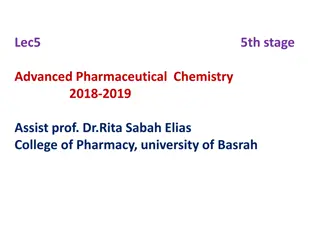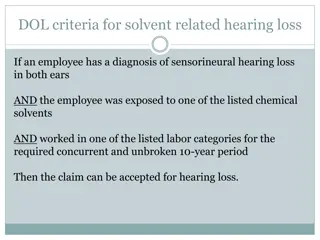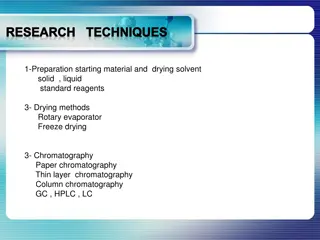Drying of Solvents: Methods and Importance
Conventional drying agents are used to remove water from organic solvents, but complete drying is crucial for moisture-sensitive compounds like Grignard reagents. Ethers, commonly used solvents, require proper purification steps to prevent peroxide formation. Chlorinated solvents pose risks and need specific drying agents to avoid explosions. Understanding these processes is vital in laboratory settings.
Download Presentation

Please find below an Image/Link to download the presentation.
The content on the website is provided AS IS for your information and personal use only. It may not be sold, licensed, or shared on other websites without obtaining consent from the author.If you encounter any issues during the download, it is possible that the publisher has removed the file from their server.
You are allowed to download the files provided on this website for personal or commercial use, subject to the condition that they are used lawfully. All files are the property of their respective owners.
The content on the website is provided AS IS for your information and personal use only. It may not be sold, licensed, or shared on other websites without obtaining consent from the author.
E N D
Presentation Transcript
Lecture 15b Drying of Solvents
Conventional Drying Agents Usually drying agents like anhydrous Na2SO4or MgSO4 are used to dry many organic solutions They remove the majority of the water but not all of it because the drying process is an equilibrium reaction A + n H2O A*(H2O)n They adsorb varying amount of water (n=0.5 (CaSO4), n=7 (MgSO4), n=10 (Na2SO4)) Their efficiency is measured by intensity, capacity and velocity can greatly vary from one solvent to the other Problem: The water is just adsorbed by the drying agent and not consumed
Moisture Sensitive Compounds Why is a dry solvent important? Grignard reagents Cyclopentadienide Enolates Transition metal halides
Ethers I Ethers are very commonly used solvents because of their ability to dissolve a broad variety of compounds Many ethers are hygroscopic due to their polarity and their ability to form hydrogen bonds with water Most ethers react with oxygen in air in the presence of light to form explosive peroxides, which have higher boiling points that the ethers themselves Diethyl ether and tetrahydrofuran are often inhibited with BHT (3,5-di-tert.-butyl-4-hydroxytoluene), which is also used as anti-oxidant in cosmetics, pharmaceuticals, etc. Other ethers used in synthetic work are 1,2-dimethoxy- ethane and diglyme (both display a higher boiling point than diethyl ether and tetrahydrofuran)
Ethers II Purification Step 1: Test for peroxides with KI-starch paper (turns dark blue) or acidic KI-solution (turn yellow-brown) in the presence of peroxides Step 2: Removal of water and peroxides by treatment with sodium/benzophenone (color change from beige to dark blue) File:KI test paper.jpg Due to the formation of hydrogen gas the reaction because irreversible The dark blue color is due to a ketyl radical anion (Ph2CO.-Na+), which is only stable in the absence of other radicals (i.e., oxygen), of oxidants and protic solvents (i.e., water, alcohols) Alternatively LiAlH4or CaH2can be used as drying agents for less rigorous applications This approach can also be used for many hydrocarbons i.e., toluene, hexane, heptane, etc. http://upload.wikimedia.org/wikipedia/commons/thumb/e/e3/Toluene_with_sodium-benzophenone_-_intense_blue.jpg/220px-Toluene_with_sodium-benzophenone_-_intense_blue.jpg
Chlorinated Solvents Never use alkali metals or alkali metal hydrides to dry chlorinated solvents because this will lead to violent explosions, sooner rather than later! Drying agents used here are calcium hydride (converted to Ca(OH)2) or phosphorous pentoxide (converted to HPO3and H3PO4) Reflux and distilled under inert gas The same reagents can be used for hydrocarbon solvents i.e., hexane, toluene, etc.
Other Solvents Alcohols Ethanol: CaO or Na/diethyl phthalate Methanol: fractionated distillation, Na/dimethyl phthalate Dimethyl sulfoxide Reflux over CaH2 Dimethyl formamide Stirring over anhydrous MgSO4 Acetone, acetonitrile First drying over CaH2and then over P4O10
Summary Removal of water and other compounds is important to maintain the quality of the reagents, optimize yields and reduce undesirable side reactions Obtaining very pure solvents can be an arduous task in some cases because the purification usually involves many steps and extended reflux in most cases The purified solvents are often stored under inert gas and over a molecular sieve to keep them dry for some time Maintaining the solvent purification systems is also very important to avoid unpleasant surprises i.e., disintegrating flasks, explosion due to the build-up of peroxides, etc.



